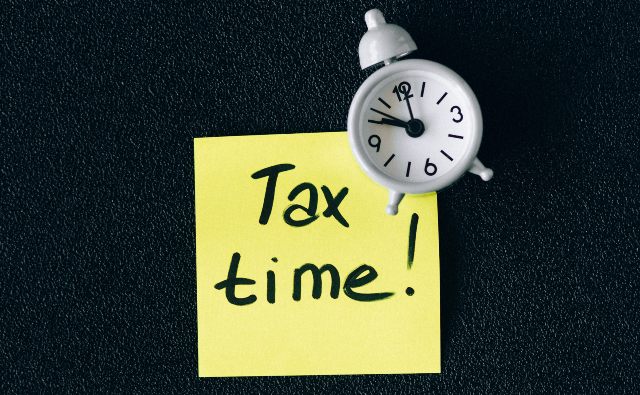Last Updated on July 24, 2022 by The MediFi Guy
Let’s revisit the example from the previous post:
Having speed read through the previous posts and attained a basic understanding of index funds, let’s imagine you did the above and set up a R3000pm debit order investing in an SP500 index fund and forgot about it.
39 years and 11 months later, when you’re 1 month away from retirement you decide to check how your investment is doing.
This is what you see.
This chart represents the 10% pa compounded growth on your investment.
Then, one month later, on the very last day of your working career, just as you’re saying your final goodbyes to your co-workers, you happen to see that there’s something happening on the news. They’re talking about some kind of event that has just happened in the markets. You look at the TV, and see this:
What happened?
Stocks always go up, right?
Yes, yes they do, over extended periods of time, ie decades.
What you would have ignored and failed to account for in this admittedly exaggerated example is the short-term volatility of the investment.
Volatility
Volatility refers to the rate at which the price of a given investment increases or decreases over a certain period of time. You can visualize it as how “spikey” the graph of a certain investment looks over time.
There are many factors that determine how volatile an asset is, which we will not be discussing. The most important thing to understand for our purposes is the differences in volatility among the main asset classes – stocks, bonds, and cash. We’ll further simplify the discussion by focussing on only stocks and bonds since for our purposes we think of “cash” as being super short-term Bonds. So they’re basically the same thing for us.
Stocks are the more volatile and therefore the riskier asset class. Why? Because everything from a CEO’s ill-considered social media posts, to a presidential election, political policies, and global pandemics, can influence the price of a company’s stocks.
Bonds are the less volatile and therefore safer asset class. Why? Because governments (in stable countries of course) will always have money to pay back their loans. Governments are guaranteed to get money in the form of tax through the threat of force. If someone refuses to pay the taxes they owe, they’re thrown in jail. If they try to put up a fight, they’ll be killed by the police. So the state will always get its taxes no matter what. And if it doesn’t, it’ll just print money to pay back its loans. Cash is even safer than Bonds but we’re including them under bonds for this discussion
Volatility poses a problem in that it can result in severe dips in the value of your investment, but the asset class with the highest return, stocks, has the highest volatility. So how do we get the benefit of the high returns, without falling victim to the volatility? What is the solution?
The solution has already been touched on in prior discussions regarding active and passive investing. When you speculate on a single stock, you risk losing everything if the company fails. Let’s make an example.
Say you had speculated on a single airline company stock. A pandemic hits, no one is flying anywhere anymore, the share price plummets, and you suffer massive losses.
Now let’s say you had speculated on two stocks, an airline company, and a TV show streaming service. The pandemic hits causing the airline stock to dip, but now that people are stuck at home more people subscribe to the streaming service causing the price to pump
Finally, let’s say you had speculated on four stocks, an airline company, a streaming company, a cinema stock, and a pharmaceutical company.
The pandemic hits. The airline stock dips, the streaming company goes up, the cinema stock dips because people aren’t allowed to go to cinemas anymore, and the pharmaceutical stock pumps when a vaccine is released
Notice anything?
It appears that within the asset class of stocks, certain types of stocks tend to go up while other types tend to go down given the exact same circumstances. So if you were to only buy one stock, you would risk losing everything if that stock crashes. But if you buy more than one stock – which is to say you DIVERSIFY your investment in stocks – you are less affected by the volatility of a single stock because while one may go down, it’s highly likely that another one will go up
Therefore, DIVERSIFICATION also referred to colloquially as not putting all your eggs in one basket protects you against volatility.
However, recognize that it is not simply the act of diversification that protects you, it’s the act of diversifying stocks that behave differently from each other. It wouldn’t have helped you if you had invested in a diverse portfolio of different airline stocks. They all would have crashed because of the pandemic. What protects you, is investing in a diverse range of stocks that move differently. One goes up, the other goes down. The term used to describe to what extent two stocks “move together” is how “CORRELATED” they are. Some stocks tend to move the exact same way, i.e. are HIGHLY CORRELATED. Others tend to move in opposite directions, i.e. have a LOW CORRELATION.
Therefore the way to protect against the effects of volatility is to have a DIVERSE PORTFOLIO OF LOW CORRELATED STOCKS. That way, some stocks will pump, and others will dip, but overall everything averages out.
Speaking of everything “averaging out”, where have we come across that concept before? Of averages? That’s right, INDEX FUNDS! By their very nature, in that an index fund is an investment composed of a piece of every single company on the stock market, the index fund solves the problem of volatility within the asset class of stocks by taking diversification to the extreme. While some of the stocks go up, others go down, but overall you get the average return of the market – which over a long period of time always goes up.
Diversification
Alright, so I understand how diversifying into low correlated stocks in the form of an index fund solves the problem of volatility of a single stock. But that doesn’t really address the problem in the above example. That’s exactly what was done! You invested in an S&P 500 index fund, but then it crashed just before your retirement date! So nothing that has been said addresses the problem!
Correct, but we’ve only just started our discussion of correlation and diversification
Let’s pretend that the reason the US stock market crashed in the scenario we used was that the presiding US president had just announced his intention to dissolve the US constitution and remain in power for life as Emperor of the United States. In response, various states announced their intention to secede from the Union and declared war on the federal government. With Russia announcing its intention to back the states in their coming war on the federal government. In other words, the US is about to collapse.
This would lead to people worldwide panic selling their US investments to get out as quickly as possible.
What do you think would happen to the stock markets in more stable countries, for example, European Union nations? Or even Russia? Or China? Where do you think all that money leaving the US would go? And how would that affect the stock markets in those countries?
Most likely whilst the US economy market crashed, the other markets would be boosted by the new influx of investment. In other words, there would be a LOW CORRELATION between the US market and other markets.
This low correlation presents us with another type of diversification: GEOGRAPHICAL DIVERSIFICATION. Geographical diversification*refers to buying the same asset, but in different locations/countries. The reason you do this is that there are differences in correlation between different geographical stock markets. Therefore, when one country’s stock market goes down, another country’s stock market may go up. Resulting in you being less affected by any massive dips in one particular country.
So in our scenario, if you had further diversified your investment geographically, instead of putting all of your eggs in the US basket, you may not have suffered the fate of losing most of your investment just prior to retirement. One way of doing this may have been to invest in Stock Market index funds from several different countries. But why go to all that trouble when the purpose of passive investing is to minimize the time and effort related to investing? A far easier solution, instead of buying several different index funds, is to simply invest in a GLOBAL STOCK MARKET INDEX FUND, that contains businesses from around the entire world. An example of such an index fund is the Satrix MSCI World Equity Index ETF. Which is an index fund that tracks the MSCI World Index. A stock market index containing just over 2000 global stocks.
So we’ve now reached the point where we understand how diversifying into a global index fund of poorly correlated stocks in the form of a global stock market ETF solves the problem of volatility of a single stock as well as geographical volatility. But that still doesn’t fully address the problem. What happens if the entire global stock market crashes? What if one does exactly that but then the global markets crash just before you retire? Wouldn’t you still be financially ruined?
Not if you implement the last type of diversification: Inter-asset class diversification.
So far we’ve focussed on diversification and correlation as it relates to the asset class of stocks alone, but what about the correlation between different asset classes?
Take a look at this graph. What do you notice?
What you should notice is the following:
1) Stocks (the blue line representing the S&P 500) are very volatile.
2) Bonds (the yellow line representing the Newfunds inflation-linked bond index) are less volatile.
3) During periods of time when the stock market was going down, the bond market remained stable or continued to rise.
Interesting. So when stocks go down, bonds go up. What do we call this phenomenon again?
LOW CORRELATION. There is a low inter-asset class correlation between stocks and bonds. The reasons for this are many and we won’t delve too deeply into them. For our purposes just think of it this way: when the stock market crashes, people dump their stocks and switch over to the safer investment – bonds – so bonds go up/remain stable.
How does this knowledge help us solve our problem of volatility? By allowing us to have BOTH INTRA-ASSET CLASS, AS WELL AS INTER-ASSET CLASS DIVERSIFICATION. If our investment portfolio contains both stocks and bonds, when the stocks go down, the bond will remain stable or even go up. In the same way that intra-asset diversification for stocks can be maximized using stock market index funds, the same applies to bonds. The way to maximize bond diversification is to invest in bonds via Bond Market Index Fund.
The best way to mitigate against volatility is to have an investment portfolio that contains both a global stock market as well as a bond market index fund.
With all that said, we appear to have solved our problem almost completely. The one question that remains now is if there was any way of completely avoiding the effects of a stock market dip completely before retirement. Luckily for us, there is! And that is the topic of the next post: Time Horizons.
Time Horizons
Luckily for us, this is a relatively short and easy concept to understand:
The longer the time period that you intend to hold an investment, the more time your investment has to recover from volatility before you need to access it, therefore the higher the proportion of more volatile assets (such as stocks) that you can include.
The shorter the time period you intend to hold an investment, the less time it has to recover from volatility before you need to access it, therefore the lower the proportion of volatile assets (such as stocks) that you can include, instead you should favour more stable assets such as bonds that are less likely to suffer from short term volatility.
So to refer back to the previous scenario, let’s suppose that knowing you intend to work for 40 years before you retire, you initially invest 100% into stocks. After 30 years you decide to check on your investment, and you see this:
Your investment may have had a few dips here and there, but overall it has grown quite nicely since it had the time to recover from any volatility.
But now, being aware of the concept of time horizons, you remember that your retirement is now only 10 years away. You realize that 10 years may not be enough time for the stock market to recover from a massive crash. You now have a much shorter time horizon before you need to start cashing in your investment to live off of during retirement, therefore you cannot risk experiencing a massive crash now.
So what you do is you decide to rebalance your asset allocation by selling off half of the stocks, and using that money to invest in bonds instead. Now your portfolio contains 50% stocks and 50% bonds. You also change your debit order to buy stocks and bonds 50/50 from now on. You leave your investment to continue growing and after 5 years, check your portfolio again and see this:
Over the 5 years of having a portfolio of 50% Bonds/ 50% Stocks, your portfolio continued to grow, but now at a slower but less volatile rate, due to the effect of the bonds. You now realize that you’re only 5 years away from retirement. To experience a market crash or major dip at this point would be catastrophic for your future. So what you decide to do now, is to completely sell off all of your stocks, and rebalance over to a portfolio of 100% Bonds. You encourage your colleague who is also 5 years away from retirement to do the same. They don’t listen. You leave your portfolio alone for another 5 years. On the day of your retirement, you and your colleague both check your portfolios. (with his 100% Bond portfolio) and his colleagues (with their stock-based portfolios), check on their investments.
This is what you see:
Your portfolio:
Your colleague’s portfolio:
As a result of your forethought, you realized that since you had a short time horizon before you needed to realize your investment, you needed to shift over into a less volatile asset class in order to not have your investment destroyed by a dip right before you needed it. Your colleague did not realize this, never rebalanced their investment, and as a result, lost a significant portion of it just before retirement.
With that we arrive at the final lesson to learn with regard to volatility:
If you will need the money very soon the majority of your investment should be in a stable asset such as bonds. If you will only need the money in several decades’ time you can put the majority of it in a higher return, volatile asset such as stocks. The closer you get to the date that you will need to cash out the more you should switch over to bonds, and by the time you arrive at that date the majority of your investment should be in bonds. This act of changing the composition of your investment is referred to as ASSET CLASS REBALANCING.
For our purposes, there is a simple rule of thumb (developed by investment experts) that we can follow.
Roughly speaking, THE PERCENTAGE OF BONDS IN YOUR INVESTMENT PORTFOLIO SHOULD MATCH YOUR AGE.
For example, let’s say you start working at age 25. Your portfolio should roughly consist of 25% bonds, and 75% stocks. By the time you reach the age of 50, your portfolio should roughly contain 50% bonds and 50% stocks. By the time you reach the age of 65, your portfolio should roughly contain 65% bonds and 35% stocks.
But remember, this is simply a rule of thumb. The more bonds you have towards the end the safer you will be. It’s probably better to have something like 90% bonds and 10% stocks by the time you’re 60 and thinking about retirement.
The age rule of thumb only really applies to the standard retirement age of 65. The earlier you intend to retire, the shorter your time horizon, therefore the quicker you should switch over to bonds. For example, if you intend to retire at age 40, by the time you’re 35 your portfolio should probably be around 80% bonds and 20% stocks.
Conclusion
That marks the end of our discussion of volatility, asset class correlation, diversification, and rebalancing. In our next post, we’ll see how these concepts in conjunction with those covered in previous discussions around stocks, bonds, cash, and property are applied to the concept of “pooled funds”, namely Unit Trusts and Exchange Traded Funds (ETFs).
Stay tuned!
Legal Disclaimer: The information on this website including research, opinions or other content is not intended to and does not constitute financial, accounting, tax, legal, investment, consulting or other professional advice or services. The author of this blog does not act or purport to act in any way as a financial advisor or in a fiduciary capacity. Prior to making any decision or taking any action, which might affect your personal finances or business, you should take appropriate advice from a suitably qualified professional or financial adviser.



